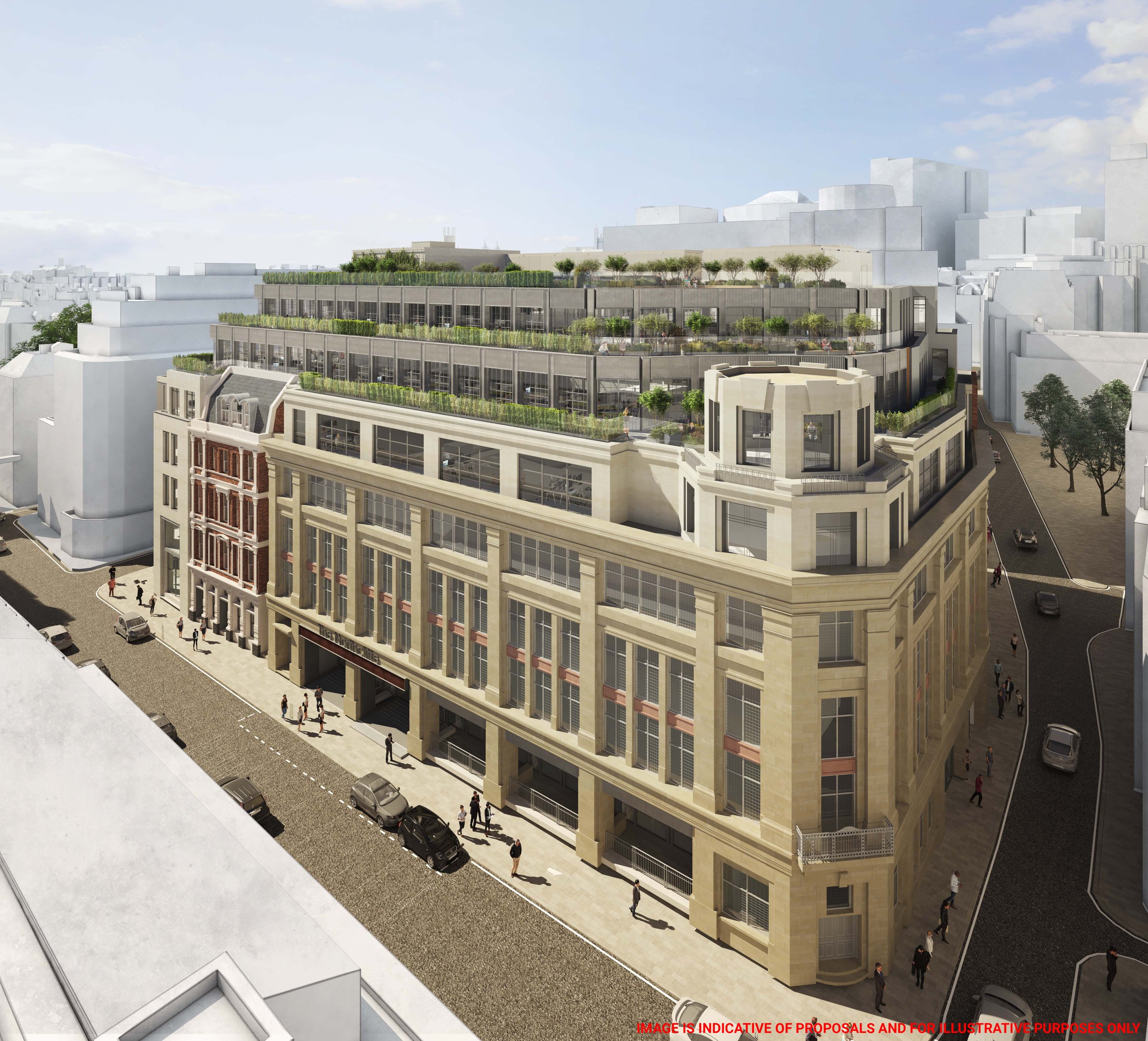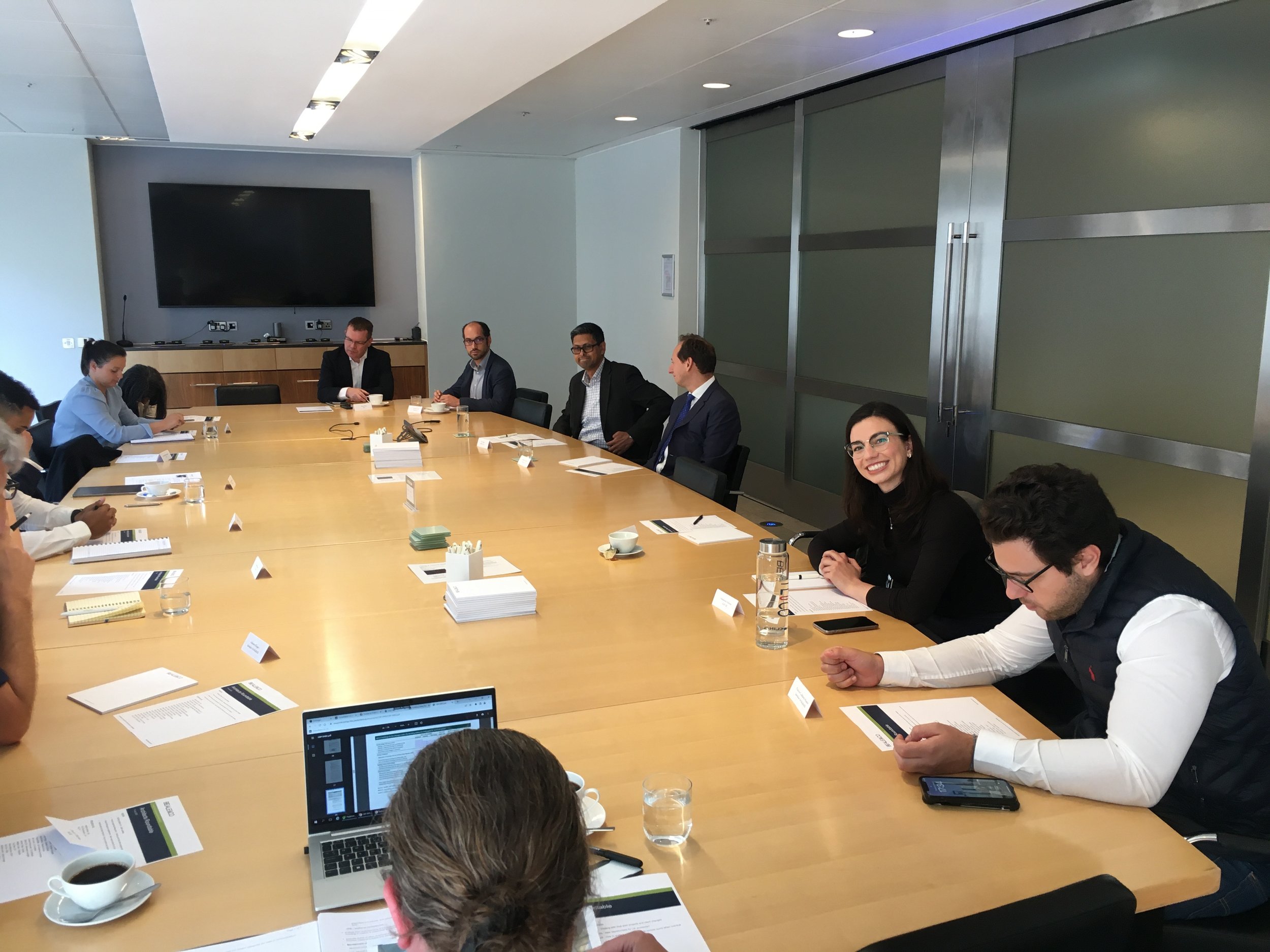On Friday 17 February 2023, the UK Architects Registration Board (ARB) and the US National Council of Architectural Registration Boards (NCARB) held a joint Q&A session at the RIBA headquarters to discuss the landmark UK-US architect Mutual Recognition Agreement (MRA). The session delved into the details of the MRA, focusing on the following question as a prompt: what will this new MRA really mean for US and UK architects?
Introduction & Opening Statements
The session began with a welcome by RIBA Chief Executive Officer Dr. Valerie Vaughan-Dick, whose organisation represents 50,000 British architects including many expatriates. According to the RIBA, the UK architecture industry generated £524 million in 2022, the majority of which were services exported to countries outside of the EU. “The most significant non-tariff barrier to trade is a lack of mutual recognition of professional qualifications,” said Vaughan-Dick. “Fifty-nine percent of [RIBA] members believe this is a top priority if we're going to boost trade in architecture.” The MRA will also welcome talented foreign architects interested in working in the UK. “We know international architects bring a wealth of design skills and market knowledge that helps to make the UK a leader for creativity and innovation,” said the RIBA CEO.
Following these initial statements, AIA National President Emily Grandstaff-Rice took the floor. The AIA President represents 96,000 American architects both in the US and abroad. Grandstaff-Rice had flown from Washington, D.C. to attend the previous day’s signing, which opened the 60-day window for the Agreement to take effect on April 25th. According to Grandstaff-Rice, the MRA addresses one of the AIA’s post important strategic goals: helping the public “recognise the value of [architectural] work in addressing the world’s most pressing challenges.”
“The problems that we face don't necessarily respect the borders that we have put down,” said Grandstaff-Rice. “So a Mutual Recognition Agreement… helps both the UK and the US to share knowledge to come together to solve the world's most pressing issues.” She also took time to acknowledge the AIA UK members in the room. “The beauty of the AIA is that we’re not just a national organisation,” she continued. “We’re a collective of components [that] are really the lifeblood of this organisation.”
“This has been a very historic time,” added NCARB President, Bayliss Ward, “because this is one of the first MRA's that we have done under a whole new process.” He spoke about how difficult it was to get the MRA approved on both legislative fronts and thanked everyone for their effort. “It's been a very, very big ball to push up the hill,” he said. “We finally have crested, and we're on the downhill side of it!”
In both the UK and the US, routes to qualification still occupy a narrow bandwidth. In recent years, however, there have been small but important shifts on both sides. “Rather than looking at a very narrow definition of qualifications, it's looking about how we can assure the public that people on the register are competent,” said ARB Chief Executive, Hugh Simpson. NCARB Chief Executive, Mike Armstrong echoed Simpson’s comments. “Historically, NCARB had been very conservative if it didn’t look exactly like how we do licensure in the United States,” he said, and described this attitude as “outdated.” According to Armstrong, the new MRA is “a public statement to the global community that NCARB has changed its perspective.”
ARB and NCARB have found common ground on identifying the most important issue regarding architectural qualification: protecting the well-being of the public. The mechanism by which the MRA seems to operate is through the idea of a competency model inherent to both the ARB and NCARB pathways. The integrity of the MRA hinges on identifying broader competency criteria that demonstrate equivalency on both sides of the agreement.
Though the MRA took 5 years to formally develop, it has been the result of discussions over 20 or so years – discussions which often included vocal AIA UK members. “[The relationships] over the last couple of years - and from a basis point, probably a lot longer – have been very much about understanding trust, understanding the process on different sides of the Atlantic,” said Simpson. “There's a lot more that we want to do, and will be able to do, in the future.”
The MRA: Everything You Need to Know
The US-UK Mutual Recognition document was developed by four key people: Emma Matthews and Rob Wilson from ARB, and Harry Falconer and Patricia Ramallo from NCARB. The AIA UK developed ties with the MRA team when collaborating on events in 2022. All four team members participated in sharing information about the MRA last year at a highly anticipated webinar and follow-up live event hosted by AIA UK sponsor, Roca London Gallery.
For a US Architect to register in the UK, the following will be required:
An active Architect’s Licence in good standing in a US jurisdiction. (An NCARB jurisdiction refers to the licensing board of an individual state or territory).
An active NCARB Certificate in good standing with NCARB.
The NCARB Certificate must be earned through the Standard Path to Certification, which comprises of the following:
Successful completion of a professional NAAB-accredited degree programme. This can be either an accredited Bachelor of Architecture, Master of Architecture, or Doctor of Architecture.
Successful completion of the AXP (Architecture Experience Programme) or its predecessor, IDP (Intern Development Programme).
Successful completion of the ARE (Architect Registration Examination).
Lawful authorization to work in the United Kingdom (i.e., the Locality in which the MRA candidate seeks authorisation to practice as an Architect).
Successful completion of the ARB UK Adaption Assessment.
For a UK Architect to register in the US, the following will be required:
An active Architect’s Registration in good standing with the ARB.
The Registration must be earned through the UK Qualified Route to Registration, which comprises of the following:
Lawful authorization to work in the United States (i.e., the Locality in which the MRA candidate seeks authorisation to practice as an Architect).
Creation of an NCARB Record and receipt of an NCARB Certificate
Successful completion of any jurisdiction-specific requirements, such as supplemental examinations or education. (An NCARB jurisdiction refers to the licensing board of an individual state or territory).
The ARB will then certify the individual who holds those qualifications. And then we will hand that certificate and the credentials over to NCARB, who will take things forward. From that point, NCARB will issue that certificate, and then the individual being able to go on to the state level jurisdictions and register accordingly.
Again, mirroring NCARB's requirements, UK architects will need to be in good standing. So that means no disciplinary issues to report and have lawful authorization to work in the UK. Some jurisdictions have specific requirements to register in those areas, such as some additional jurisdictional examinations.
Exclusions and caveats – The MRA is a kind of licence or registration level agreement. There's no mutual recognition at the qualification, M.Arch-level or Part II-level. One needs to be fully licensed or registered to benefit from the agreement.
Registration and licensing is on a state-by-state basis. So NCARB will act as a passporting body and then individuals will be able to go to the relevant states from there. It has been noted not all US jurisdictions will participate initially though expansion of this list is a priority.
Individuals who have already benefited from other MRAs will not be in scope of this agreement. For example if one has joined the UK register through another agreement, or joined the US register, or licensed in the US [through another agreement], then they won't be able to benefit from the agreement. Additionally, individuals who have been through our Prescribed Exam process are not within scope currently.
NCARB and ARB did note that they are committed to reviewing the agreement on a regular basis and over time, in hope to expand its scope. There's a 60-day standstill period from the point of the MRA being signed giving both the ARB and NCARB the opportunity to prepare for applications, promote the agreement and explain how it works to people. Both ARB and NCARB will open simultaneously on the same date to applications, which is planned to be April 25th. We will be posting information on our website, there'll be numerous social media messages issued through the normal channels.
The UK Adaptation Assessment: Everything You Need To Know
For an NCARB Certificate holder licensed in a US jurisdiction that accepts the MRA, the UK Adaptation Assessment is the only requirement to join the ARB Register.
This means that the Prescribed Examination no longer applies to eligible MRA candidates. The ARB anticipates this to translate into significant savings in both cost and time. The current PE route involves one undertaking equivalency examinations at Part I & II with the applicant then undertaking a Part II course.
The ARB & NCARB anticipate that there will be significant cost and time savings – perhaps as much as 50 percent, and for many, be at least six months quicker. Some cases may be even quicker due to demonstrated experience. Individual experiences will vary as each case may involve unique circumstances.
The cost of taking the UK Adaptation Assessment is currently set at £2950, which to many will seem quite steep. The ARB states this is purely an operational cost and is examining how best to reduce this cost.
According to Emma Matthews, the UK Adaptation Assessment is a domain-specific requirement focused on the context of UK architecture practice. This Assessment was specifically designed to focus on things like UK legislation and building regulations. It will therefore not re-test anything that US Architects have already been assessed on.
The Assessment will consist of two key parts. The first will be to ask candidates to submit a short reflective career summary, which will be templated and for which guidance and support will be available. The second part will be to provide candidates with scenario-based questions to help them prepare for the professional interview portion. Once completed and passed, the MRA candidate is then accepted onto the ARB Register.
Audience Questions & Answers
Following the presentations, there was an opportunity for the audience to ask questions. Some of the highlights have been paraphrased below – note that these are paraphrased.













